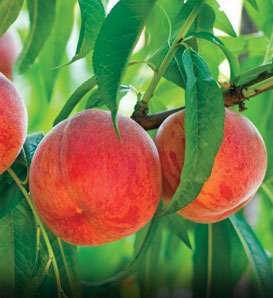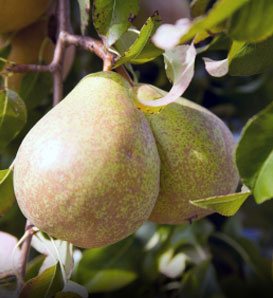Refer to the map below to see what Gardening Zone you are in. This is important because you need to know when your areas average last Spring frost and first Fall frost will be.
 |
Once you have found your zone, look online when to plant each vegetable. If you're ZONE 6, like me, search for Zone 6 vegetable planting. Below I have created a modified chart from the book "Easy Gardening 101" by Pat Stone, derived
from "Basic Country Skills" on page 176, by Martha and John Storey.
These are average dates when you need to grow each vegetable. For instance, Broccoli must be started indoors 10 weeks before your last frost, then transplanted into your garden three weeks before the last Spring Frost. Most vegetables need a month to mature before transplanting. Another example, Celery needs to be started 8 weeks INDOORS before last frost, then transplanted two weeks AFTER your last Spring Frost.
| Vegetable | Start Indoors (Weeks before last frost date) | Transplant Date (weeks before (-) or after (+) last frost date) |
| Broccoli | 10 | -3 |
| Cabbage | 10 | -3 |
| Cauliflower | 10 | -3 |
| Collards or Kale | 10 | -3 |
| Leeks | 10 | -2 |
| Onions | 10 | -2 |
| Parsley | 10 | -3 |
| Celery | 8 | +2 |
| Lettuce | 8 | -4 |
| Chives | 6-10 | 3 |
| Basil | 6-8 | +2 |
| Marjoram | 6-8 | 3 |
| Dill | 6 | +2 |
| Eggplant | 6 | -2 |
| Peppers | 6 | +2 |
| Tomato | 6 | +2 |
| Swiss Chard or Spinach, Arugula, Endive | 4-5 | -2 |
| Summer squash | 3-4 | +2 |
| *Most herbs, corn, melons, and squash like to grown outside after last Spring Frost. Plat 1-2 weeks after last Spring frost. | ||
February
February 1st: Start Cabbage indoors (use potting soil or COMPOST if possible.) When starting seeds indoors, use a creative growing media like recycled plastic jugs, plastic water bottles, Tupperware containers, yogurt cups, plastic salad containers, etc. You do not have to buy seed starting kits!
March
March 1st: Start Onions, Cauliflower, Collards, Kale, and Broccoli indoors (all take 5-10 days to germinate.) Preferably, you want a large deep and wide tray to scatter seeds. This helps speed up the germination process; but you can also use individual containers for each seed.
Considering this is around the time of year, all fruits, veggies, and herbs need to be started indoors or transplanted outdoors, check out this link "Vegetable Growing Guides" to see specifications of each vegetable you want to grow.
Considering this is around the time of year, all fruits, veggies, and herbs need to be started indoors or transplanted outdoors, check out this link "Vegetable Growing Guides" to see specifications of each vegetable you want to grow.
March 10th: Start Celery and lettuce indoors. Celery takes 14-21 days to germinate, so be patient, and be sure to start celery in a deep container.
March 15th: Directly sow Spinach, Arugula, Peas, and potatoes. You may be able to plant beans during this time. Most peas like to grow up a trellis or pole, so construct a means for your peas to climb! For potatoes, dig a 12-inch wide and 6-inches deep TRENCH with a hoe. As the plants emerge, hoe the soil up to them to create a hill 8 inches high. Spinach and Arugula can be sown every 10 to 14 days to ensure continual supply.
March 30th: Start tomato, peppers, eggplant, okra, and Chives/garlic indoors. You can also get your herbs started during this time (dill, basil, or cilantro), but it is not necessary as it is best to directly sow after chance of frost. Peppers, and eggplant take 10-15 days to germinate while tomatoes take 7-10 days.
April
April 10th: Start summer squash indoors.
April 11th: Directly sow Spinach, beets, carrots, radishes, turnips, lettuce, as well as other greens.You can also grow beans during this time. Carrots do best in sandy soil, especially in raised beds. All root vegetables do best in raised beds, and it is actually easier for the beginner gardener to try this method.
April 15th: Transplant cabbage, broccoli, eggplant, and Cauliflower.
April 16th: Transplant Kale, collards, and parsley. Remember, Kale doesn't like the heat, you may want to plant Kale in a location that gets afternoon shade as well as morning sun. You can also directly sow more greens to ensure continual supply, like arugula, frisee/endive, Swiss Chard, and lettuce.
April 23rd: Transplant ONIONS. You may be able to directly sow Asparagus.
April 30th: Start melons indoors (cantaloupe, watermelon.)Some people may start them earlier in a greenhouse to grow maximum size.
MAY
 |
I'm growing two... Golden Jubilee Peach (Prunus persica) |
May 2nd: Start Brussels Sprouts indoors for fall Harvest. Brussels Sprouts do best in fall.
May 13th: Transplant summer squash, zucchini, tomatoes, okra and peppers. Directly sow or transplant dill, basil, cilantro, and other herbs. All veggies like to be sown 12-24 inches apart. Plant squash, tomatoes, and peppers in large mounds to ensure strong stalks (this will be helpful in heavy rains and winds.)
May 13th: Transplant summer squash, zucchini, tomatoes, okra and peppers. Directly sow or transplant dill, basil, cilantro, and other herbs. All veggies like to be sown 12-24 inches apart. Plant squash, tomatoes, and peppers in large mounds to ensure strong stalks (this will be helpful in heavy rains and winds.)
This is also a good time to plant FRUIT OR NUT trees. I bought Peach trees, plum tree, and Pear trees last year; and I will be digging up my Grandfather's FOREST OF PAW-PAW TREES. I would love to invest in Cherry trees, apple, blueberry and strawberries.
May 15th: Transplant celery; and directly sow Sweet Potatoes.
May 30th: Directly sow cucumbers, corn, and beans. Corn of all crops can tolerate clay soil, so you grow your corn in a location that has not been properly tilled or been given nutrients. Cucumbers like to be grown in large mounds like squash and tomatoes. And, always stake your beans with several posts in every row, because beans love to climb. Transplant Melons. Make sure to water melons everyday; and grow melons in large mounds that are 8-10 inches high.
June
June 3rd: Start Cabbage indoors for fall harvest.
June 15th: Start Cauliflower indoors. At this point, you can also transplant your Brussels Sprouts.
Transplant
Brussels Sprouts 12-24 inches apart. Brussels Sprouts (and other
Cabbage family veggies) make good companions with onions, beets, beans,
celery, and tomatoes. Brussels Sprouts as well as other veggies from the
Cabbage family, do not make good companions with Strawberries. To
encourage early sprouts to gain size, break off all branches as soon as
you see tiny sprouts at the bottom of the stalk (starting from the
lowest and continuing up to 6-8 inches.)
 | |||
I'm also growing two...Kieffer Pear (Pyrus communis x P. pyrifolia) |
July
July 15th: Transplant Cauliflower.
July 19th: Directly sow Lettuce. Lettuce can be sown as close as 3-4 inches apart.
August
August 1st: Transplant Cabbage.
August 2nd: Directly sow Kale, Swiss Chard, Frisee/Endive, and other greens (lettuce, arugula, etc.)
August 15th: Directly sow Carrots, Broccoli, Beets, Radishes, and Turnips.
August 24th: Directly sow Spinach and Arugula.
Harvest food during September, October, and November. You can continue to plant greens throughout the cool season. If necessary, find a room in your home that gets sun, and stays warm, to keep potted herbs.
See what to do during the "off months" in this blog post "Garden Prep (What I'm doing to prepare for spring gardening in DECEMBER)" on what gardening preparations you need to be doing for Spring Planting. There are many ways to make a garden look beautiful, and you can certainly make your yard look beautiful for free or low cost, as I talk about in my post "Free ways to decorate your yard"
I also talk about using free materials in this post "What's the best, free material to use for raised beds?" and in this post "Raised Bed Garden Ideas & Using Free material" to make your garden free, functional, and flourishing. For an idea of what to grow during the Spring, Summer, and Fall, check out my pictures of vegetables that I grew here "What to Grow During the Summer" and here "How to Plan your Summer Garden". All the pictures are of my produce during the early stages. I had plenty of later stage pictures, and lots of fruiting plant pictures, but I didn't save any of them. I will have lots of pictures this year of my garden, so don't worry! My garden will at least three times better than my garden last year.
Remember when choosing planting locations: all plants like sun, water, space, and nutrients. If you don't give them that, they will not be the best vegetables they COULD have been. But don't forget that all vegetables and fruits are unique, so pay extra attention to what each plant needs. For every food you are growing, research what their specific requirements are, to ensure optimal growth in your garden!
No comments:
Post a Comment